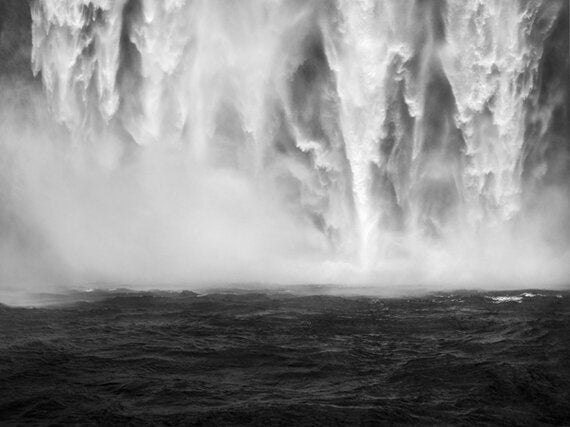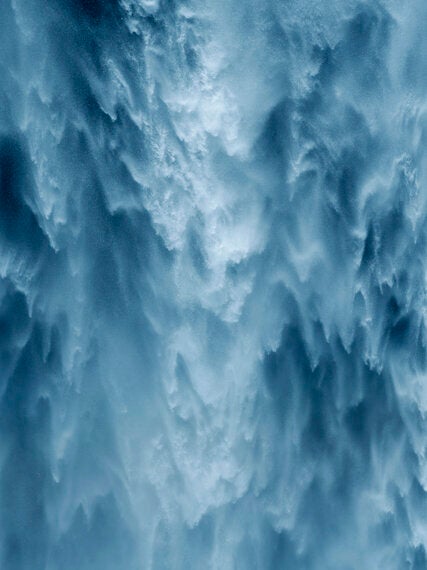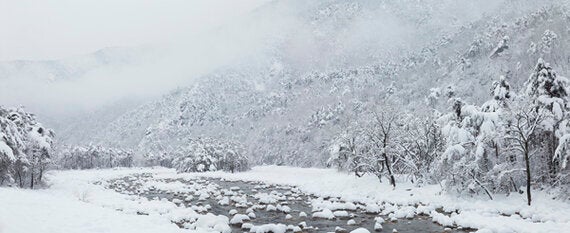Acclaimed South Korean photographer, Boomoon, was enchanted by a waterfall he discovered at Skogar in Iceland in 2015.
Early one morning when the light was low, he waded waste-high into the cold water directly in front of it, so that the horizon in the pictures he took would be located precisely at the lower third of the frame.

He shot some several hundred black and white exposures, a series of six of which, including Skogar 384 (above) form the centrepiece of his new solo exhibition at London's Flowers Gallery.
Each of the Skogar photos captures the huge energy unleashed in the torrent of water. You can almost hear the roar of nature. The ever-changing cascades and veils of spray also record the subtle changes in focus and detail as the waterfall becomes this artist's canvas.
He has shot his subject horizontally in order to contrast the whiteness of the falls to the darkness of the river. The pictures are closely cropped to exclude all periphery detail and sense of scale. Boomoom attributes the crystalline clarity of his images to the stark purity of the northerly light.
"Water itself is not my main interest," he told me through an interpreter. "I'm interested in phenomena - time, space and weather. Together they create a special, never-repeatable moment that I wanted to capture."

Where the site is important in the black-and-white prints, it's not the case with Waterfall 2069 (above). Shot later in the day, and given a shade of blue, the explosive energy of the water itself creates an almost abstract pattern.
"I was interested in the prism effect created by the interaction between the water and the sunlight, and the detail of the waterfall reminds me of the universe, the stars, the cosmos."
It's no surprise that Boomoon, now in his 60s, began his artistic studies as a painter before settling on photography.
Throughout the 1970s, he documented through his photographs the rapid changes that took place in Korean society, in particular the ever-widening contrast between urban and rural communities.
More and more though, he became drawn to natural phenomena and his works are now notable for their absence of human beings.
Boomoon has exhibited internationally and a major retrospective landscape series at the art museum in Daegu, his birthplace, confirmed his importance as a renowned photographic artist.

The most spectacular work in this show is the enormous (10 metres wide) Untitled 2561 (above) that was first displayed in the Salon d'Honneur at Paris Photo 2015. The large space of the Flowers Gallery's Hoxton branch is able to accommodate it suitably. Seeing it in the flesh is similarly the only way to do it justice. Producing prints of what he calls "exhibition size" has become something of a hallmark.
The photograph forms part of the Sansu section of the exhibition, meaning "mountain water" in Korean and consisting of landscapes taken over the past eight years.
Once again, there is no human presence in them and some critics have noted a tension between the eastern philosophy of a holistic assimilation of the self within nature, and the western romantic notion of man and nature as distinctive forces.
"I'm not a naturalist or an environmentalist," Boomoon explains. "But I find in nature a space for self-reflection."
Boomoon - Skogar and Sansu is showing at the Flowers Gallery, 82 Kingsland Road, London E2 8DP until 25 June.
All images are used with the permission of the artist and gallery.